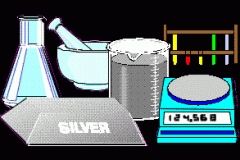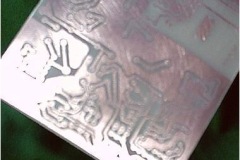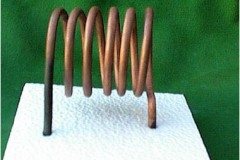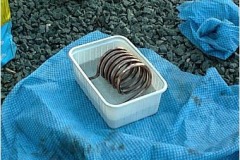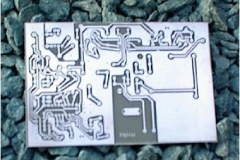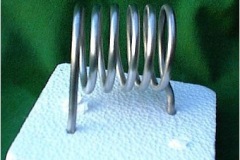Lierse Radioamateurs

Silver plating, ON4AWU
Occasionally, RF circuits necessitate silver-plated components like coils, capacitors, and printed circuits. This is because RF currents predominantly flow along the surface of the conductor due to the skin effect. Over time, copper conductors undergo oxidation, resulting in reduced conductivity. While silver-plated conductors can also oxidize, they do not suffer from decreased conductivity.
Various methods exist for silver plating copper or brass components, such as electrolysis or chemical processes. However, applying electrolysis to pre-etched printed circuits may not yield the desired outcome. Additionally, most alternative solutions rely on highly toxic chemicals like cyanides, and the resulting silver coating is not sufficiently robust to withstand the heat of a soldering iron.
After conducting experiments and seeking professional advice, a formula has been developed that avoids poisonous substances like cyanides. It is important to note that the formula is not meant for consumption but is considerably safer for usage.
Formula for a 50 milliliter solution (adjust proportions for larger quantities; this amount can easily silver plate four two-sided Euro cards):
- 50 ml demineralized water (H2O)
- 2 grams silver nitrate (AgNO3)
- 1 gram ammonium chloride (NH4Cl)
- 5 grams calcium carbonate (CaCO3)
- 4 grams sodium thiosulfate (Na2S2O3)
Procedure for preparing the solution:
- Dissolve 2 grams of silver nitrate in 50 ml of demineralized water.
- In a mortar, mix 1 gram of ammonium chloride, 5 grams of calcium carbonate, and 4 grams of sodium thiosulfate, then add this mixture to the solution. Note that calcium carbonate is only necessary when intending to rub an object with a cloth rather than immersing it in a tank.
Instructions for usage:
- Thoroughly clean the copper, brass, or zinc object you wish to silver plate using an iron cloth. For heavily oxidized objects, nitric acid can be used for cleaning, but remember that it is poisonous, so exercise caution.
- Immerse the object in the solution tank for approximately 2 minutes, or rub it with a cloth soaked in the solution for a few minutes if preferred.
- All the required materials can be obtained at any pharmacy. To polish the silver-plated object, use a flannel cloth soaked in alcohol or apply a metal polish.

